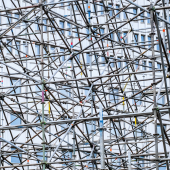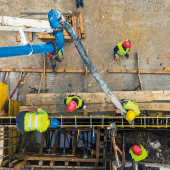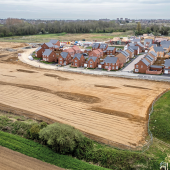Cross UK Report 1160
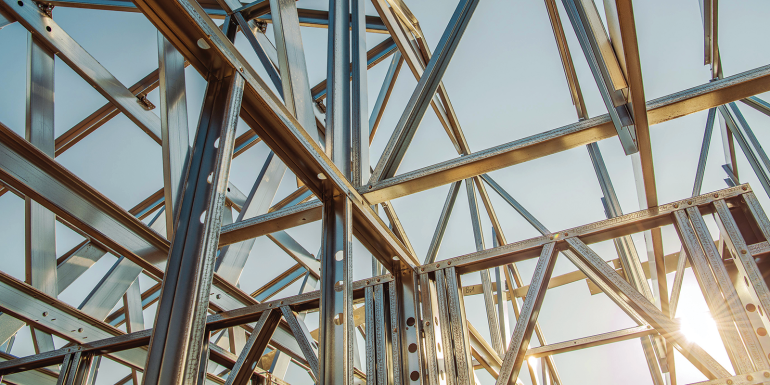
Collaborative reporting for safer structures. Report: 1160 Collapse of folded plate timber roof at a school.
A critical safety issue concerning folded timber roofs in various settings, including over school halls.
In 2011, the reporter told CROSS of a sudden failure of a proprietary timber roof system over a school hall that had been constructed in 1959. In response to the failure, Report 273 Collapse of proprietary timber roof was issued (bit.ly/CROSSUK_273). The reporter believes that local authorities shared that information to help identify similar roofs. However, the reporter, who is a Chartered Structural Engineer, has had another enquiry concerning a roof suspected to be of the same type of construction. In researching this enquiry, the reporter has come across a news report of a collapse of another school roof in England in 2019 that appears to be of the same type of construction as that which collapsed in 2011. The construction of the roof appears to be similar to that shown in Figures 1 and 2 below. The age of the roof is not known to the reporter.
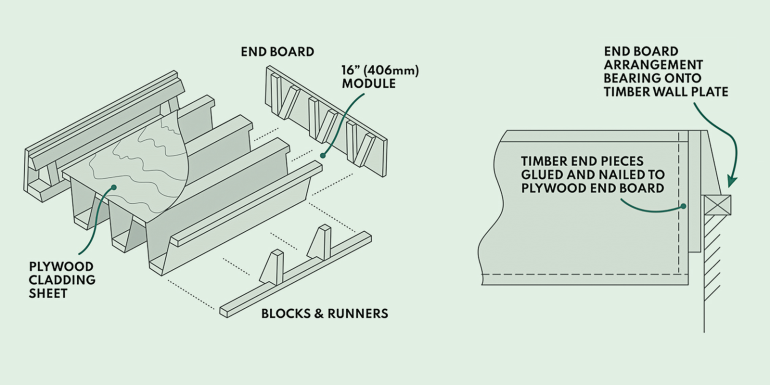
Figure 1: sketch of roof system Figure 2: side view at bearing
The reporter considers that if the cases are similar, the end blocks of the roof – which were likely just held with glue and panel pins – may have become detached as they did in the previous case, resulting in a sudden shear failure and the collapse of the roof.
If this second case does indeed concern the same proprietary system, continues the reporter, then it has been involved in two sudden collapses, either of which would have had catastrophic consequences if the buildings had been occupied at the time. The reporter considers that a significant number of these roofs, which may not have had failsafe remedial work undertaken, could exist and users of such buildings may be at significant risk. The reporter is of the opinion that the failure of these roofs is almost inevitable as they age and that a reminder concerning these structures would be very timely.
The reporter also makes the point that a robust system for local authority surveyors to share safety information concerning their buildings is essential, given that such system builds were widely adopted and may by now be showing their age. However, given the erosion of in-house local authority services, the reporter is not sure if any such reporting mechanisms that existed may have atrophied.
Comments
This roof collapse was reported as a sudden failure and, as such, often comes with no warning. Fortunately, the failure happened during a school holiday, otherwise the outcome could have been catastrophic. The reporter is right that this incident should have been shared widely. This would especially be the case if the roof is a proprietary system where generic weakness may exist.
The cause of the collapse was not clear; however, any structure that relies upon glue and panel pins is unlikely to be robust if water damage occurs at critical connections. It may be that a lack of maintenance permitted water penetration, which impacted critical connections and precipitated the collapse. Any roof with suspected water penetration or water shedding problems should be inspected and repaired as a priority, as water degradation can cause structural damage and failures. Good detailing, construction and maintenance of weatherproofing systems are essential.
An ice rink roof collapsed onto skaters in Bad Reichenhall, Bavaria, Germany, in 2006, killing 15 people. Investigations found no single cause for the collapse, but rather a series of contributing defects and damage. The design capacity of the failed elements was found to be inadequate. This already inadequate capacity was then further reduced over time due to deterioration in the timber box girders. The structure was about 34 years old at collapse.
CROSS published Report 1227 Collapse of unusual hybrid concrete and steel strand truss on school roof (bit.ly/CROSSUK_1227) in May 2023. This new failure in northwest England and the failure of the unusual hybrid truss have remarkable similarities in that both are unusual forms of roofing structure, both were used in school roofs and both roofs were of significant age. Readers are advised to read both this and the aforementioned CROSS Report 273 as the issues and concerns are wholly related to this latest report.
This report reinforces the importance of robust and timely inspection and maintenance strategies. The reporter is concerned that previous efforts to identify similar plywood folded box timber roofs may not have been completely successful. This failure in northwest England appears to support that concern and responsible bodies of buildings potentially containing such roof structures are urged to take notice of this latest failure. The reporter also makes the point that a robust system for local authority staff to share safety information concerning buildings is essential, but the reporter is not sure if any such reporting mechanisms that existed may have atrophied.
This concern emphasises the importance of the voluntary reporting system provided through CROSS. If any readers have experience of such roof systems, they are asked to please submit a CROSS report. In addition, CROSS understands that the Department for Education seeks to make bodies responsible for education facilities in England aware of building issues of concern.
To subscribe to the CROSS UK newsletter (structural and fire safety concerns), visit
cross-safety.org/uk/user/register
Key learning outcomes
For owners and persons responsible for the safety of buildings including schools:
- inspect and assess existing buildings, particularly those that are of a significant age, to see if they contain unusual forms of construction, including roofs similar to the reported failure; and
- if so, or if there is doubt, arrange for structural inspections and risk assessments to be undertaken by engineers who are suitably qualified and experienced persons (SQEP) – normally Chartered Structural or Civil Engineers.
For inspecting engineers:
- undertake a risk assessment of old and unusual structures where there is a life safety risk should they fail
- consider what combination of causes could lead to a structural failure
- understand where structural elements may be beyond their reasonable service life
- look out for signs of distress, including those in hidden components or locations; and
- be aware of the risks associated with moisture build-up, particularly where timber is a structurally significant component.



